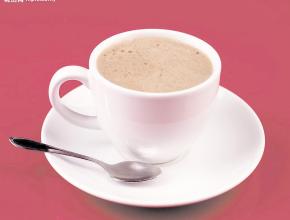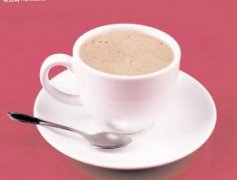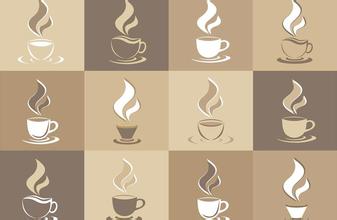Unique floral fragrance of Panamanian Erida Manor Coffee Flavor and Taste introduction to boutique Coffee
The Panamanian flag was launched on November 3, 1904. The flag is rectangular and the ratio of length to width is 3:2. The flag consists of four rectangles of white, red and blue. White symbolizes peace; red and blue represent the former Panamanian Liberal Party and the Conservative Party respectively, and they are also symbols of the two parties' United struggle for the interests of the nation. The blue star on the white background at the top left represents loyalty and integrity, while the red star on the white background at the lower right represents the authority of the law. The design of the crosshairs divided into four pieces represents that Panama is located at the junction of South America, North America, Atlantic and Pacific Ocean. Red, blue and white are the colors of the American Stars and Stripes that support the independence of Panama. The flag was designed by Manuel Amador Guerrero, the first president of Panama, and the current government of Panama was formed on July 1, 2009. the main members are: vice President Juan Carlos Varela, Minister of the Presidential Office Jimmy Papadi Mittriu, Foreign Minister Fernando Nunez Favre, and State Interior Minister Jorge Ricardo Favre. Minister of Public Security Jose Raul Mulino, Minister of economy and Finance Frank George de Lima, Minister of Commerce and Industry Ricardo Quijano, Minister of Agriculture and Animal Husbandry Development Oscar Armando Osorio Kassar, Minister of Health Javier Diaz, Minister of Housing Yasmina Pimentel (female), Minister of Labour Armah Lorena Cortez (female) Guillermo Ferrufino, Minister of Social Development, Lucy Molina, Minister of Education (female), Minister of Public works, Jaime Ford, Minister of small and medium Enterprises (female), Minister of Canal Robert Roy, Minister of Tourism Salomon Sama the overall economy is at a low level of development, agriculture, forestry and fisheries account for the majority of people's livelihood. However, shipping-related enterprises and some financial and insurance industries have international status, resulting in a small number of super-rich classes, and there is a large gap between the rich and the poor. Panama is rich in forest resources and has many tropical tree species. Mahogany, cedar, teak and other timber are abundant in the east, providing a small number of internationally competitive exports. Farmers live on tropical cash crops such as bananas, pineapples, sugar cane and coffee. The industrial foundation is weak, there is no heavy industry, and the manufacturing industry is mainly light industries such as agricultural and animal husbandry products processing industry and livelihood products industry, and some low-tech household appliances can be self-made.
Copper and gold deposits are relatively large, currently ranking the sixth largest copper country, with an output value of US $430 million in ore mining in 2013. There are theoretical reserves of oil and natural gas in the eastern rock strata, which has also become the focus of the international energy industry. for ordinary people, if they want to get out of the countryside, they can only go to the city to engage in the service industry, with a service output value of US $25.1 billion, and transportation, warehousing and tourism are major sources of job opportunities. The port of Gelang in Panama (including three terminals such as MIT, CCT and Cristobal) on the Atlantic coast and the ports of Balboa and PSA Panama in Panama on the Pacific coast rank first and second in container traffic among the major ports in Central and South America. In the first quarter of fiscal year 2014, the passing tonnage of the Panama Canal reached a record high of 87.7 million tons in a single quarter.
Panama's geographical advantage is that it has many distinctive microclimate areas suitable for coffee cultivation, and Panama also has many persistent and professional coffee growers. This means there will be a lot of very good coffee in Panama, but these coffees are often associated with high prices.
The high price of coffee in Panama is mainly caused by the following factors:
Land price: for the people of North America, they very much want to buy a stable and beautiful land at a low price. Panama is such a place;
More Panamanian farmers export coffee in the name of manors to emphasize their own estates; when the commodity price of coffee is still relatively low, the Panamanian Fine Coffee Association organized a competition called "Best Panama": coffee beans from different parts of Panama were ranked and auctioned online. Esmeralda Manor has been growing a kind of coffee called "Geisha" for many years, and the auction has made their coffee known to more people. Then they won the first place in the competition for four consecutive years from 2004 to 2007, and then won the competition again in 2009 and 2013. It kept breaking records until it was priced at $21/lb in 2004 and then rose to $170/lb in 2010. In 2013, a small portion of the sun-treated coffee was sold for $350.25/lb. There is no doubt that this is the highest price of coffee sold on a single estate in history.

Important Notice :
前街咖啡 FrontStreet Coffee has moved to new addredd:
FrontStreet Coffee Address: 315,Donghua East Road,GuangZhou
Tel:020 38364473
- Prev

Unique floral fragrance of Panamanian Erida Manor Coffee Flavor and Taste introduction to boutique Coffee
The Panamanian flag was launched on November 3, 1904. The flag is rectangular and the ratio of length to width is 3:2. The flag consists of four rectangles of white, red and blue. White symbolizes peace; red and blue represent the former Panamanian Liberal Party and the Conservative Party respectively, and they are also symbols of the two parties' United struggle for the interests of the nation. The blue star on the white background on the upper left represents loyalty and integrity, and the red star on the white background on the lower right represents
- Next

Introduction to the taste of Nicaraguan lemon manor coffee with moderate acidity and delicious aroma
A city in southwestern Nicaragua and the capital of Karaso province. Located in the Diliamba Highlands, 760 meters above sea level. The population is 18000 (1980). Founded in 1883. Distribution and processing center of agricultural and animal husbandry products. There are limestone, salt mines and other mining industries nearby. Railway and road access Managua Nicaragua national emblem was launched in 1971, the national emblem by three yellow edges symbolize equality, truth and justice. Five blocks of green
Related
- Does Rose Summer choose Blue, Green or Red? Detailed explanation of Rose Summer Coffee plots and Classification in Panamanian Jade Manor
- What is the difference between the origin, producing area, processing plant, cooperative and manor of coffee beans?
- How fine does the espresso powder fit? how to grind the espresso?
- Sca coffee roasting degree color card coffee roasting degree 8 roasting color values what do you mean?
- The practice of lattes: how to make lattes at home
- Introduction to Indonesian Fine Coffee beans-- Java Coffee producing area of Indonesian Arabica Coffee
- How much will the flavor of light and medium roasted rose summer be expressed? What baking level is rose summer suitable for?
- Introduction to the characteristics of washing, sun-drying or wet-planing coffee commonly used in Mantenin, Indonesia
- Price characteristics of Arabica Coffee Bean Starbucks introduction to Manning Coffee Bean Taste producing area Variety Manor
- What is the authentic Yega flavor? What are the flavor characteristics of the really excellent Yejasuffi coffee beans?

